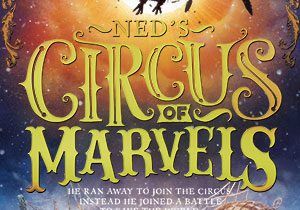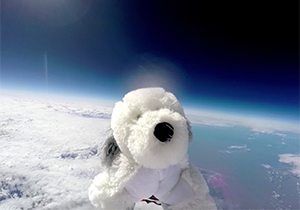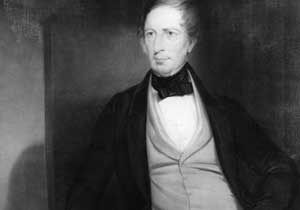
Chimpanzee rescue: primary resource
Explore the needs of chimpanzees and the threats they face in the wild
This primary resource introduces children to the needs and habitats of chimpanzees, and the kinds of threat they face in the wild. Discover how chimps are rescued and cared for at Uganda’s Ngamba Island Chimpanzee Sanctuary. What are chimpanzees poached for? How many chimps are left in the wild? How many sanctuaries across Africa rescue and care for orphaned chimps?
Pupils will learn about the work of chimp experts to care for, feed, and raise rescued chimpanzees in our National Geographic Kids’ Science primary resource sheet.
The teaching resource can be used in study group tasks for discussion about humans and wildlife living alongside one another, and how organisations are helping to make this work. It could be used as a printed handout for each pupil to review and annotate, or for display on the interactive whiteboard for class discussion.
Activity: Ask the children to read the resource sheet and discuss as a class the problems that chimpanzees face in the wild. What do they think could be done to tackle these problems? Pupils could use the information from the interview with Dr Jane Goodall to create a comic strip or diary entry from the point of view of Jane, working with chimps in Africa. Children could also use the large chimp picture on page 1 of their individual print-outs to make a chimp mask, cutting around the face and making eye holes.
This Animals primary resource assists with teaching the following Key Stage 1 Science (Year 1) objectives from the National Curriculum:
Pupils should be taught to:
- identify and name a variety of common animals including fish, amphibians, reptiles, birds and mammals
- identify and name a variety of common animals that are carnivores, herbivores and omnivores
- describe and compare the structure of a variety of common animals (fish, amphibians, reptiles, birds and mammals, including pets)
Pupils might work scientifically by: using their observations to compare and contrast animals at first hand or through videos and photographs, describing how they identify and group them; grouping animals according to what they eat; and using their senses to compare different textures, sounds and smells.
National Curriculum Key Stage 1 Science (Year 2) objective:
Pupils should be taught to:
- identify that most living things live in habitats to which they are suited and describe how different habitats provide for the basic needs of different kinds of animals and plants, and how they depend on each other
- identify and name a variety of plants and animals in their habitats, including micro- habitats
Pupils should be introduced to the idea that all living things have certain characteristics that are essential for keeping them alive and healthy. They should raise and answer questions that help them to become familiar with the life processes that are common to all living things. Pupils should be introduced to the terms ‘habitat’ (a natural environment or home of a variety of plants and animals) and ‘micro-habitat’ (a very small habitat, for example for woodlice under stones, logs or leaf litter).
Pupils should compare animals in familiar habitats with animals found in less familiar habitats, for example, on the seashore, in woodland, in the ocean, in the rainforest.
Pupils should be taught to: find out about and describe the basic needs of animals, including humans, for survival (water, food and air)
Pupils should be introduced to the basic needs of animals for survival, as well as the importance of exercise and nutrition for humans. They should also be introduced to the processes of reproduction and growth in animals. The focus at this stage should be on questions that help pupils to recognise growth; they should not be expected to understand how reproduction occurs.
National Curriculum Lower Key Stage 2 Science (Year 3) objective:
Pupils should be taught to: identify that animals, including humans, need the right types and amount of nutrition, and that they cannot make their own food; they get nutrition from what they eat
Pupils might compare and contrast the diets of different animals (including their pets) and decide ways of grouping them according to what they eat. They might research different food groups and how they keep us healthy and design meals based on what they find out.
National Curriculum Lower Key Stage 2 Science (Year 4) objective:
Pupils should be taught to:
- recognise that living things can be grouped in a variety of ways
- explore and use classification keys to help group, identify and name a variety of living things in their local and wider environment
- recognise that environments can change and that this can sometimes pose dangers to living things.
- construct and interpret a variety of food chains, identifying producers, predators and prey
National Curriculum Lower Key Stage 2 Science (Year 5) objective:
Pupils should find out about the work of naturalists and animal behaviourists, for example, David Attenborough and Jane Goodall.
This Animals primary resource assists with teaching the following Sciences Early level objectives from the Scottish Curriculum for Excellence:
- I have observed living things in the environment over time and am becoming aware of how they depend on each other
Scottish Curriculum for Excellence First level Sciences objectives:
- I can explore examples of food chains and show an appreciation of how animals and plants depend on each other for food.
Scottish Curriculum for Excellence Second level Sciences objectives:
- I can identify and classify examples of living things, past and present, to help me appreciate their diversity. I can relate physical and behavioural characteristics to their survival or extinction.
- I can use my knowledge of the interactions and energy flow between plants and animals in ecosystems, food chains and webs. I have contributed to the design or conservation of a wildlife area.
Scottish Curriculum for Excellence Third level Sciences objectives:
- I can sample and identify living things from different habitats to compare their biodiversity and can suggest reasons for their distribution.
Scottish Curriculum for Excellence Fourth level Sciences objectives:
- I understand how animal and plant species depend on each other and how living things are adapted for survival. I can predict the impact of population growth and natural hazards on biodiversity.
Download primary resource
More Like

Embark on a magical journey in Ned’s Circus of Marvels!

Meet young Changemaker, Siena!

School kids send cuddly toy on a space mission









LEAVE A COMMENT
THANK YOU
Your comment will be checked and approved shortly.
WELL DONE,
YOUR COMMENT
HAS BEEN ADDED!
COMMENTS
CUSTOMIZE YOUR AVATAR